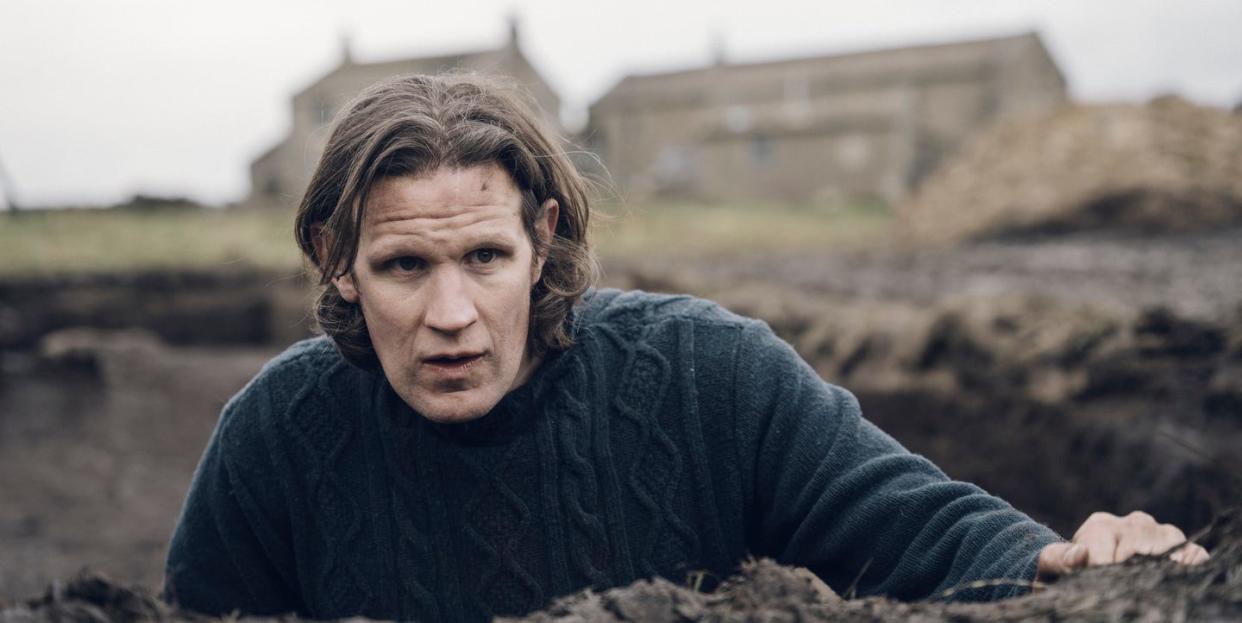'Starve Acre' Review: Low-Key Brit Horror Confirms the Countryside Is Creepy

Is the English countryside scarier than other countrysides? Certainly it comes with a particular gloominess, and a gnawing sense of all the terrible things that have happened over the centuries on our gley soil. Adding to that feeling is our rich tradition of impish folkloric n’er-do-wells, called things like Spring-heeled Jack and Tiddy Mun and the Mowing-Devil of Hertfordshire, who exert their malevolent powers over fallible humans just because they can. Plenty of ammo, then, for Starve Acre, a story about a family on an isolated farm in Yorkshire, who awaken the interest of one Jack Grey, aka Dandelion Jack, which was first a novel by Andrew Michael Hurley and is now a simmering, subtle horror-adjacent film by Daniel Kokotajlo, starring Matt Smith and Morffyd Clark.
Smith and Clark play Richard and Juliette, an attractive, pasty couple who have relocated with their troubled young son, Owen (Arthur Shaw), to Richard’s late-father’s farm in Yorkshire, from which the book and film gets its title. The hope, as it is always, is that the change of pace and the country air will do the family, and particularly Owen, some good; it also prompts archaeologist Richard to pursue a passion project involving a mythical tree stump that may or may not be buried on the family land. The countryside, though, has other ideas, and, kickstarted by a gruesome turn of events at a local fair, things quickly go dark.
There is a fair bit that’s familiar about Kokotajlo’s film, not least the fact that its Seventies setting and penchant for a slow zoom immediately gives it a certain, and no doubt intentional, feel of The Wicker Man or Don’t Look Now. There are elements that teeter on cliché – the shifty locals, the occultish secrets hidden in dusty notebooks – and yet Starve Acre maintains an elegance and composure that keeps the creepiness effective. Even a plot development involving a revivified hare, which perhaps strained at the limits of the indie’s animatronics/CGI budget, just about steers the right side of silliness.
In large part this is down to the two leads, Smith and Clark, who are perfectly cast for their mixture of gruff and ghostly, and perform even the film’s most outlandish turns with commitment and poise (something they’ve perhaps both honed in their recent fantastical exploits on House of the Dragon and Lord of the Rings: The Rings of Power, respectively). The folkloric elements, when they come, have an elevating psychological scope: is this really supernatural jiggery-pokery, or the projections of Richard’s abusive personal history, or his and Juliette’s more recent devastating tragedy? Or a disquieting bit of all three?
Starve Acre is a very beautiful film, with credit to director of photography Adam Scarth and production designer Francesca Massariol: the low, wind-swept hills and flat skies, the dreary, half-lit interiors with their dingy floral wallpaper that are so particularly English (if you’ve returned from anywhere hotter and brighter this summer, it’s akin to that why-the-hell-do-we-live-here-again-it’s-so-bloody-grey feeling you get when your plane touches down). Though it’s billed as a “folk horror”, you shouldn’t see Starve Acre expecting jump-scares (with one effective exception). Instead, prepare for an elegant, unnerving drama, carefully acted and quietly told.
Out in cinemas on 6 September
You Might Also Like


